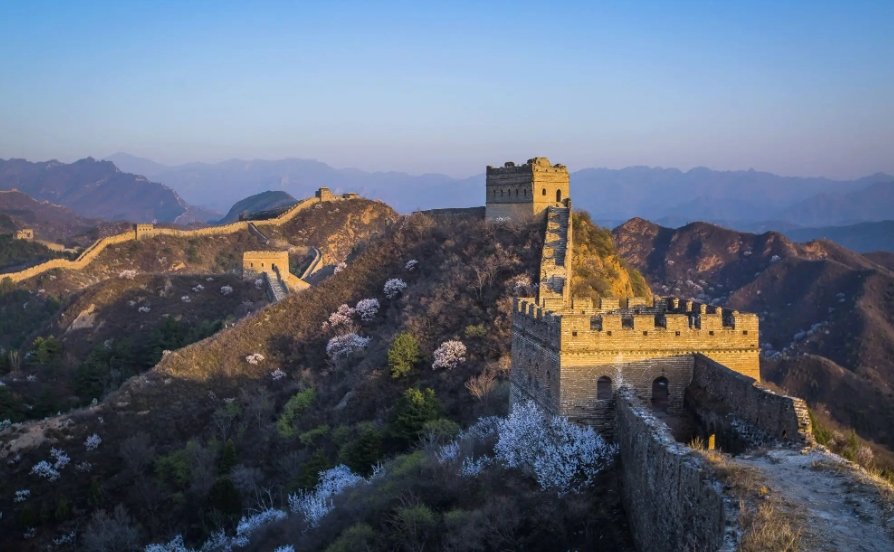
The Great Wall in Peril: Human Neglect and Nature's Wrath
The Great Wall of China, a UNESCO World Heritage site and an enduring symbol of human ingenuity and perseverance, faces a multitude of threats to its existence. While it has withstood the test of time for centuries, a combination of human negligence and the relentless forces of nature have left this architectural marvel in a precarious state.
Human Factors: A Legacy Undermined
One of the most pressing dangers stems from inadequate protection efforts. Limited resources, insufficient personnel, and a lack of comprehensive conservation strategies have hampered efforts to safeguard the Wall's vast expanse. This has created opportunities for a range of destructive activities:
- Improper Protection Methods: The use of inappropriate materials and techniques in past restoration attempts has often caused further damage to the original structure. For instance, the application of concrete over crumbling brickwork, while seemingly practical, disrupts the Wall's natural drainage system, leading to accelerated deterioration.
- Illegal Industrial Projects: The rapid economic development in China has led to the construction of mines, factories, and roads in close proximity to the Great Wall. These projects not only encroach upon its historical landscape but also generate pollution that accelerates the erosion of the Wall's brick and stonework.
- Disorderly Tourism Development: The influx of tourists, while beneficial for the economy, poses a significant threat to the Wall's preservation. Unregulated foot traffic contributes to soil erosion around the structure, while vandalism and littering leave scars on its ancient facade.
Nature's Toll: An Unending Battle
Beyond human actions, the Great Wall also faces the constant onslaught of natural forces:
- Weathering and Erosion: Centuries of exposure to wind, rain, and temperature fluctuations have taken a toll on the Wall's integrity. This is particularly evident in sections located in harsh environments like deserts, where wind erosion is a major concern.
- Vegetation Growth: Plants and trees, while seemingly innocuous, can cause significant damage to the Wall. Roots growing into cracks and crevices expand and weaken the structure, accelerating its disintegration.
A Call to Action: Preserving a Global Treasure
Protecting the Great Wall requires a multifaceted approach that addresses both human and natural threats. This includes:
- Enhancing Conservation Efforts: Implementing comprehensive conservation plans that prioritize the use of appropriate materials and traditional restoration techniques is crucial.
- Strengthening Law Enforcement: Stricter enforcement of existing regulations and harsher penalties for illegal activities like vandalism and industrial encroachment are necessary deterrents.
- Promoting Sustainable Tourism: Educating tourists on responsible behavior and implementing measures to control visitor flow are essential to minimizing human impact.
- Investing in Research: Funding scientific research to develop innovative conservation techniques and materials can provide long-term solutions for preserving the Wall.
The Great Wall is more than just a historical relic; it's a testament to human ambition and a symbol of China's rich cultural heritage. Protecting this iconic monument for future generations demands immediate and sustained action from individuals, governments, and the global community alike.
Q&A
Q: What is the most significant threat to the Great Wall?
A: While both human activities and natural forces pose threats, human negligence, particularly through inadequate protection methods and unsustainable development, arguably presents the most immediate and preventable danger.
Q: How can tourists contribute to the preservation of the Great Wall?
A: Tourists can play a role by being respectful visitors. This includes staying on designated paths, refraining from littering or vandalizing the structure, and supporting sustainable tourism initiatives.
Q: What can be done to address the threat of industrial development near the Great Wall?
A: Implementing and enforcing stricter zoning regulations that prohibit industrial projects in close proximity to the Wall is crucial. Additionally, promoting sustainable economic activities that don't harm the surrounding environment is essential.
note: This return of all, without the author's permission, may not be reproduced